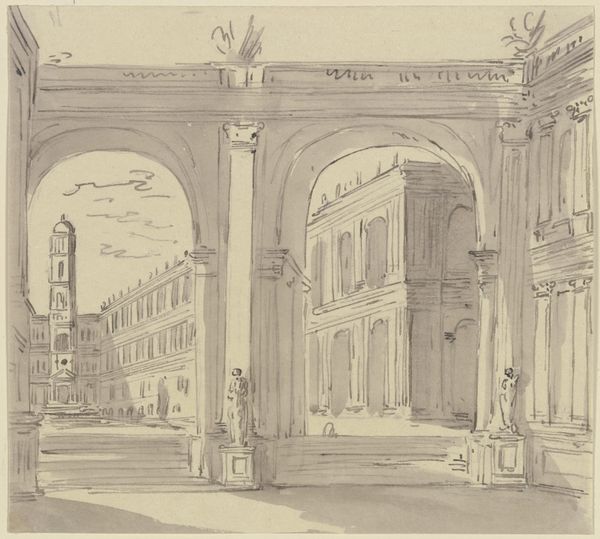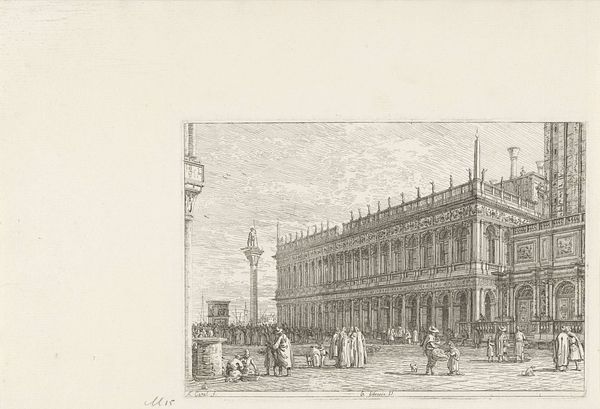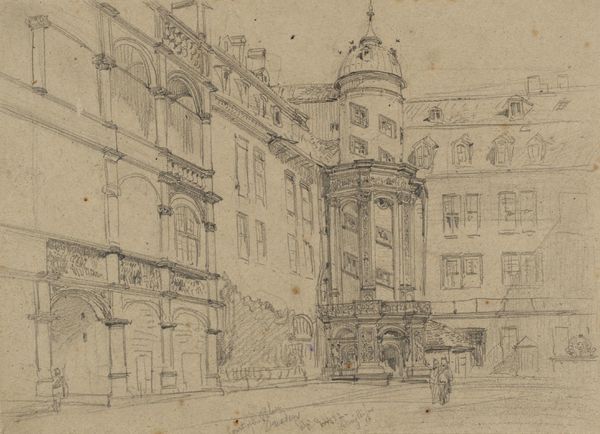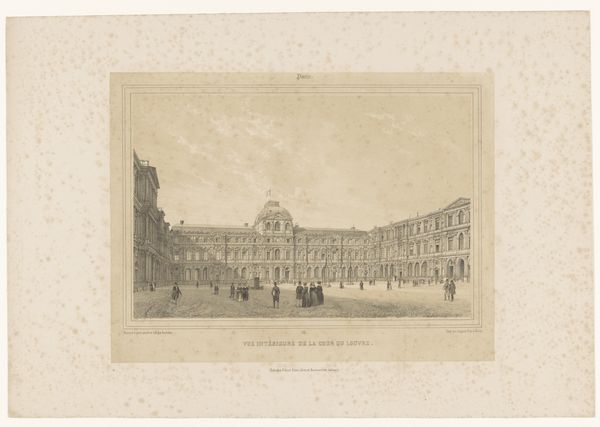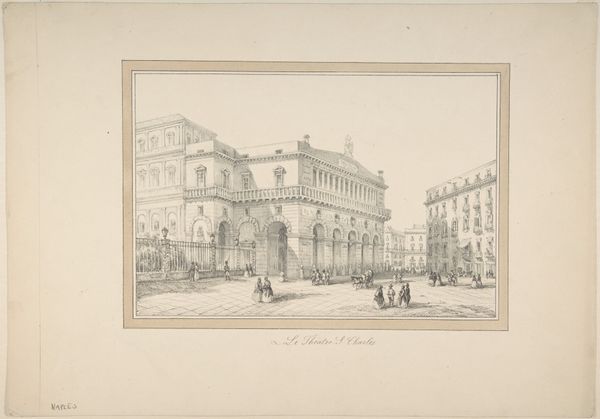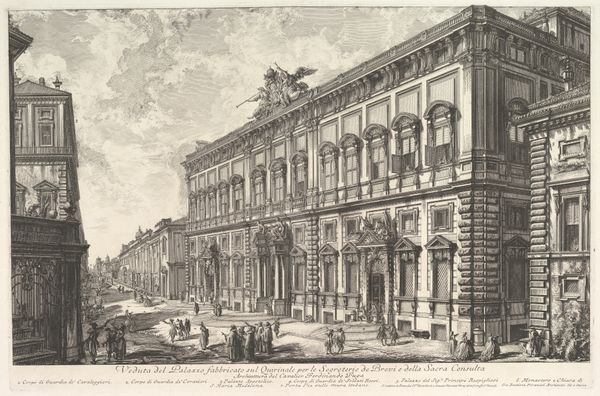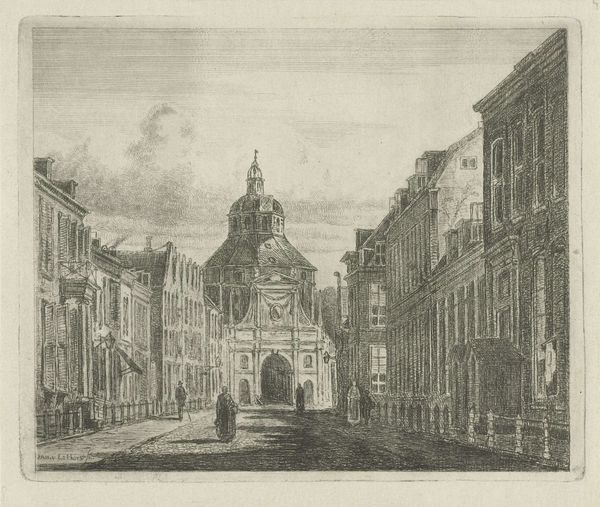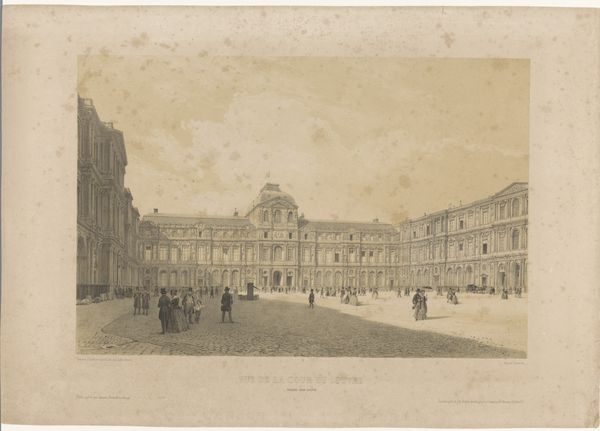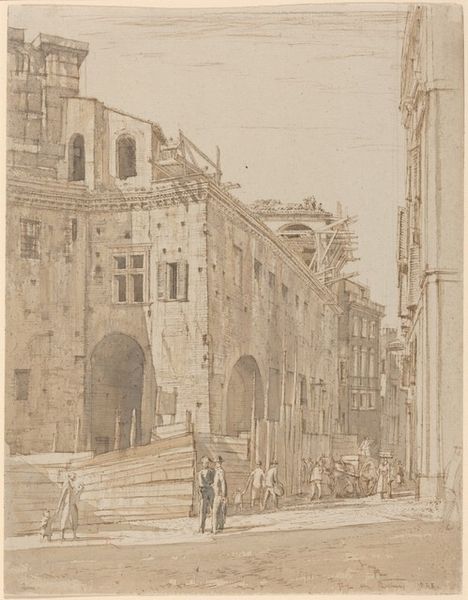
Dimensions: height 131 mm, width 229 mm
Copyright: Rijks Museum: Open Domain
Curator: Let’s discuss this drawing by Charles François Daubigny, Gare Saint Lazare te Parijs, from the period of 1827 to 1878. It’s rendered in pencil. Editor: Oh, Paris. Even in graphite, it exudes that melancholy grandeur. You can almost hear the echoes of footsteps and whispered secrets. Curator: Precisely. Consider how Daubigny articulates architectural space through subtle gradations of tone and line. The receding planes, defined by variations in pencil pressure, generate depth and a sense of perspectival accuracy that is nonetheless subjective. Editor: True, but for me, it’s the lack of rigidity that’s so striking. There’s an airy quality here. Despite all that stone, there's this feeling of lightness, almost as if the whole scene could evaporate into the Parisian mist at any moment. Curator: That ephemeral quality speaks to the burgeoning Impressionist style he employed. Daubigny prioritizes the suggestion of form over precise representation, capturing the fleeting atmospheric conditions unique to that period of landscape art. Note the sketch-like quality around the fringes of the architecture—this adds a dreamlike feel. Editor: Yes, the incompleteness. It’s like Daubigny has captured a moment on the brink of disappearing, a feeling, rather than just a scene. He invites the viewer to become a fellow traveler in a space where time itself feels fluid. Curator: He renders a sense of modernity through formal means—drawing and composition. And so even what appears to be an underdrawing embodies this feeling of transformation. What do you take away, ultimately? Editor: A lingering whisper of beauty found in the everyday, a city caught between dream and reality, rendered in strokes of subtle genius. Curator: It is a testament to Daubigny's ability to convey depth of experience and understanding of art by the subtlest means.
Comments
No comments
Be the first to comment and join the conversation on the ultimate creative platform.
